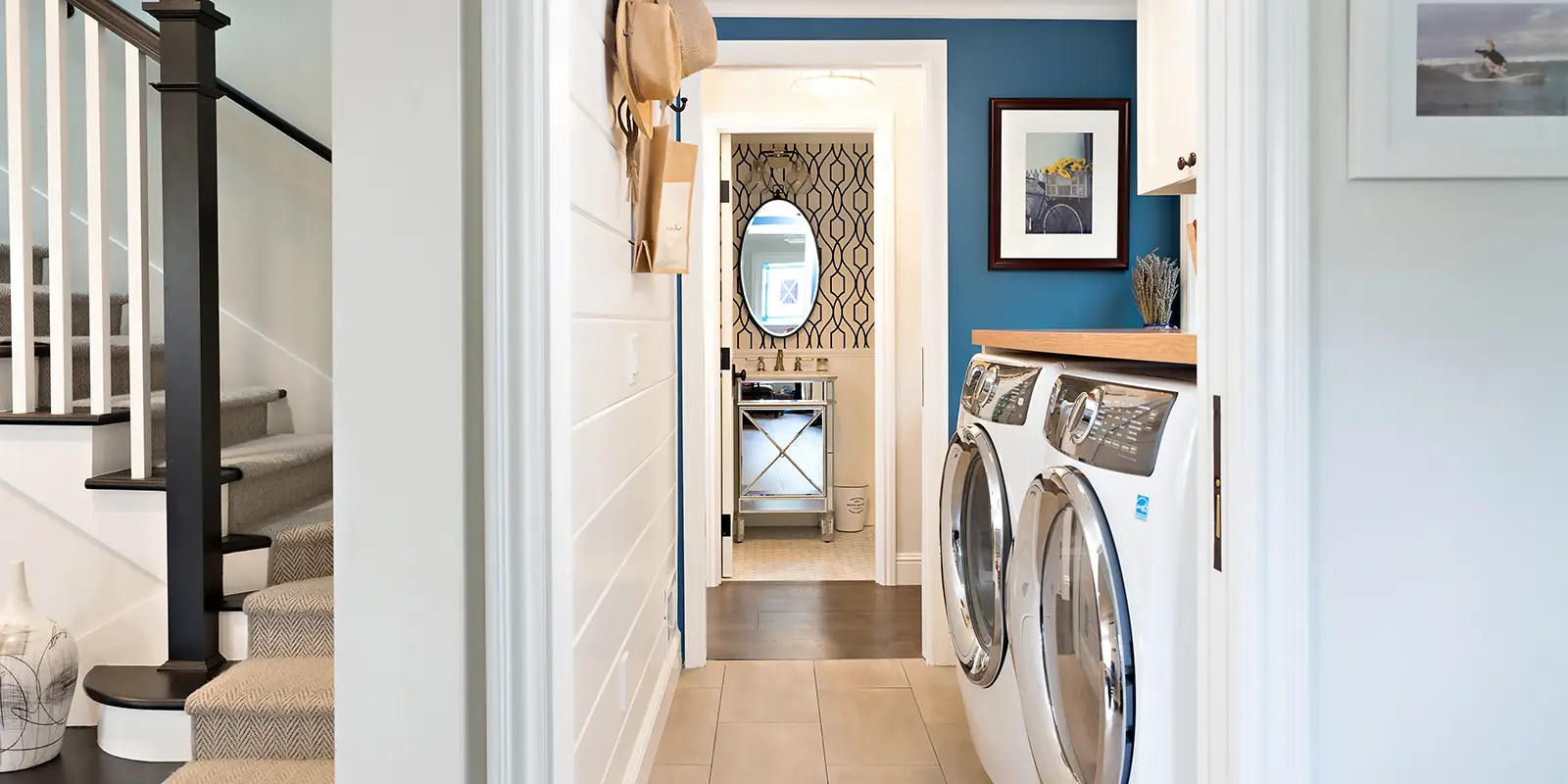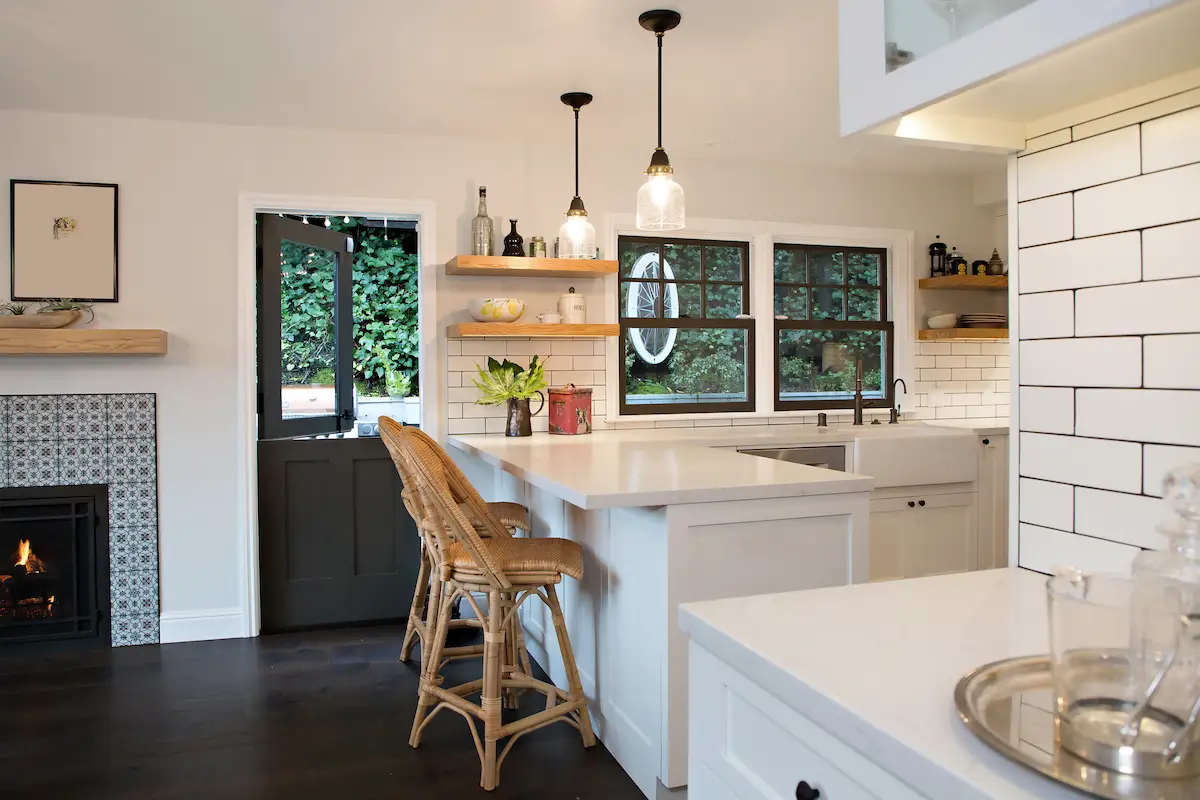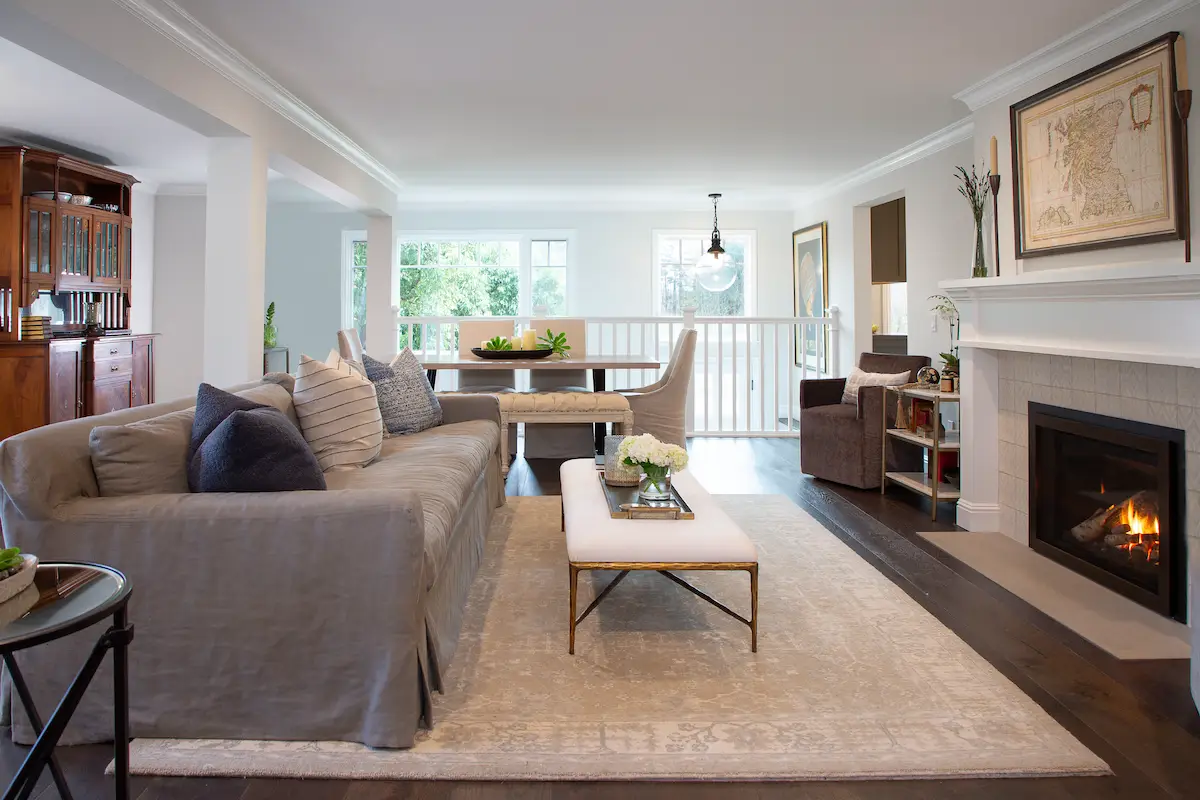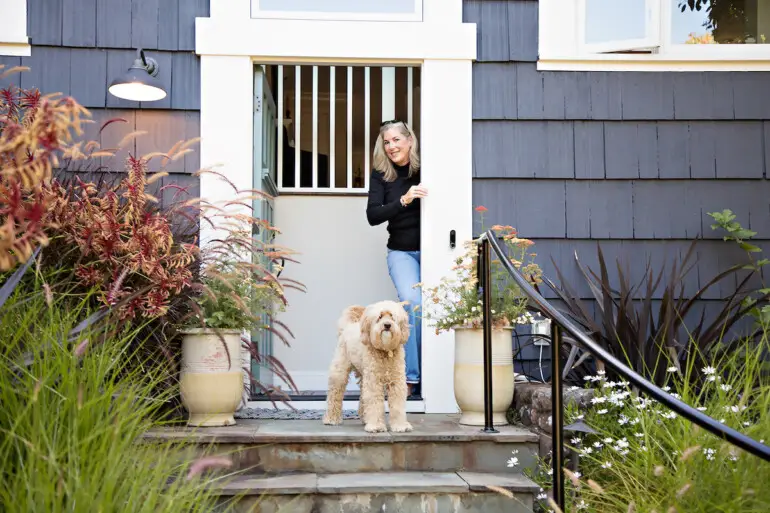When a fire caused by an over-the-counter cleaning product destroyed the home they loved, a Corte Madera family of four was determined to rebuild it.
It was the crackling sound that woke Corte Madera Compass Real Estate agent Lori Docherty at 2 a.m. on Mother’s Day, 2018. By the time she realized what was happening, the whole back side of her family’s 1908 farmhouse was on fire. Lori and her husband, Des Docherty, grabbed their 12-year-old daughter, Kayleigh, and their dog, Scottie, and ran outside, frantically pounding on neighbors’ doors, terrified the fire would spread up Christmas Tree Hill.

Earlier that day, Des had been cleaning outdoor furniture with a teak oil-based product. He’d soaked the rags in water before disposing of them in a garbage can behind the house. But oxygen inside the can eventually dried, then heated the remaining oil. It was only a matter of time before the rags spontaneously combusted, creating a blast of flame that quickly jumped to the house. “The firemen said it happens all the time,” Lori says. “Who reads the fine print on furniture cleaner you buy at the local hardware store?”
The Dochertys lost almost everything that night, but Lori was determined to rebuild. They’d lived in Corte Madera since 2004, and she couldn’t imagine living anywhere else. “This was the house my kids grew up in, the only house they knew,” she says. “All I wanted was to get back in as a family before they left for college.”
Rebuilding a historic home is already a challenge, but it also took 18 months for the insurance company to approve their plans. “It was a scary time,” Lori says. “We were left with a burnt-out home that was worth very little, and no funds to rebuild. Then Covid-19 hit.” This fear, along with her commitment to getting her family back into their house, is what kept Docherty going. “It’s what drove me each and every day of the almost three years it took to get us back in,” she says.
Docherty also credits her “dream team” — architect Eric Layton of PatriARCH Architecture, contractor Phil Gazzoli of Gazzoli Construction, and designer Julie Jay of Julie Jay Designs — who stood by her side through time-consuming delays and unprecedented obstacles.
An experienced designer, Jay was undeterred by Covid restrictions, and the limited budget and “defined criteria” imposed by the insurance agency. “We had to stay within the original footprint,” she says, “so we worked on improving the flow and making the home feel brighter and larger.”
While full of charm, the Craftsman-style farmhouse had undergone many iterations over the years. “We absolutely loved our home,” Docherty says, “but there were things that drove me crazy.” The washer and dryer, for example, were awkwardly sandwiched between the back door and the living room, while an unnecessary full bathroom off the kitchen took up too much space. “No one ever took a shower down there,” Docherty says. “Why would you?” In a truly inspired redesign, the team turned the outdated full bath into a compact powder room and transformed an internal breezeway into a functional laundry room with space-saving pocket doors on each side.

In the kitchen, Jay replaced two flat walls of cupboards with cabinets that included ample counter space, a feature Docherty didn’t have before. “I didn’t even realize how much that drove me crazy,” she says. Between the kitchen and dining area, Jay removed a built-in hutch and created a bright and inviting bar area, opening up the corner and improving the flow between the rooms. “It was a dead space before,” Docherty says, “and now it’s my favorite place in the house. We call it ‘Julie’s bar.’”
Built into the base of the hill, the house was dark, so the team added skylights and larger window frames to let light in. In the expansive great room, Jay replaced an original stained-glass window with a bigger window, transforming the open space in terms of light and view. The beautiful stained glass was one of the few remaining details of the original home, so Jay promised Docherty they would preserve it. It now hangs on the back patio, where Docherty can see it from the kitchen.
The Dochertys moved home right before Christmas, 2020. By then, Kayleigh was a junior in high school and their son, Aidan, was a senior. Looking back, Docherty believes that everything they went through makes her appreciate living in Corte Madera even more. “We know how special it is,” she says. “Our little town just keeps getting better!”

Safety Tips:
“Mineral oils are highly flammable and have a low ignition temperature when left exposed to oxygen,” explains San Rafael firefighter Michael McCarthy. “If oxygen combines with vapor from oil-soaked materials, it can cause spontaneous combustion.”
Unfortunately, McCarthy says, people tend to focus more on how to use chemical products then how to dispose of them. “I’ve seen this happen many times with folks working on home projects,” he says. “It’s caused extensive property damage and cost many people many millions of dollars.”
McCarthy’s advice for disposing of flammable materials:
- Educate yourself with a YouTube or a Google search (firesafemarin.org is a great resource.)
- Seal out oxygen by double or triple bagging your rags and securely tying them shut.
- Take them to the “Household Hazardous Waste Facility” at Marin’s Resource Recovery Center — there’s rarely a line and it’s free. As for rinsing the rags in water, McCarthy says that’s ineffective, as mineral oils are petroleum-based. “Oil and water don’t mix!” he says.

